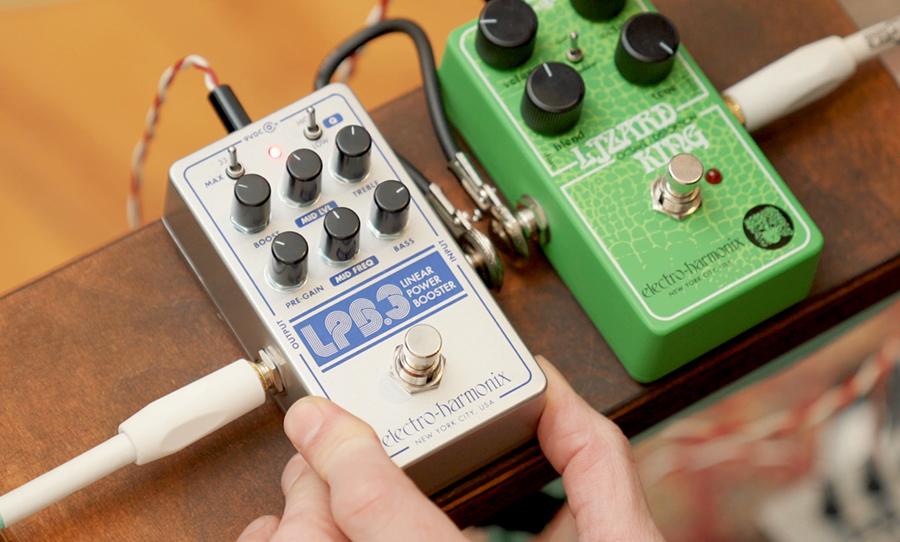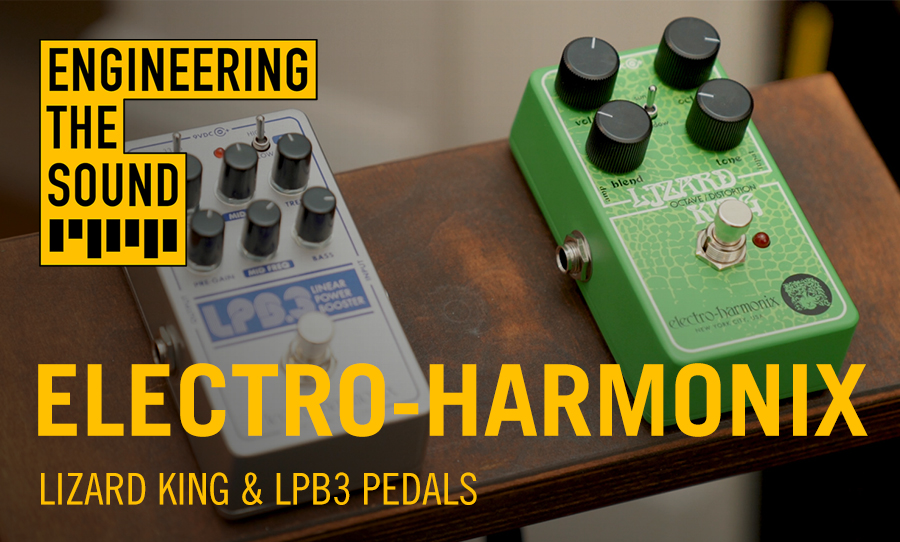Today, we’re diving into two exciting new offerings from Electro Harmonix: the LPB3 booster and the Lizard King octave distortion.
Founded in 1967 by Mike Mathews in New York, Electro Harmonix blossomed during the 70s, faced challenges in the 80s, and made a remarkable comeback in the 90s with an unexpected venture into valve manufacturing.
The brand returned to its roots in the pedal game, reissuing classic designs while also introducing a range of fresh and vintage-inspired pedals. Fun fact: check out Mathews’ custom battery featuring his own likeness!
First, let’s take a closer look at the LPB3, or Linear Power Booster. One of EHX’s earliest creations, the original Linear Power Booster featured a side jack for direct connection to an amp input.
Utilizing a single transistor, it boosted levels and overloaded the amp’s input, providing an early avenue for distortion and harmonics—essentially a precursor to modern boost and overdrive units.

The LPB3 is a significantly expanded version, offering selectable gains of 20 or a massive 33dB, along with pre-gain, bass and treble EQ controls, and a parametric mid-EQ section with a selectable frequency Q. Additionally, you can choose between true bypass and buffered options by opening it up.
Next up is the Lizard King. Initially, I was prepared to poke fun at a band known for playing lackluster lounge music paired with mediocre poetry. However, this pedal is an enhanced version of the EHX Lizard Queen octave/distortion, optimized for bass but equally impressive on guitar. So, let’s plug it in!

This unit features a distortion setting that’s always on, which you can control with the blend knob or by adjusting the volume on your guitar. The tone knob rolls off the highs through a low-pass filter, while the octave knob adds a delightful octave clang for added richness.
At the center of the Lizard King is the sun and shadow switch, offering two distinct tonal options. The “Sun” mode provides a boosted octave with enhanced mid-drive, adding more presence to any blended clean tone. Meanwhile, the “Shadow” mode delivers a tighter fuzz/distortion.

To demonstrate these pedals, I’ve invited Adam to play guitar while I tweak the settings to showcase what they can do. (Check out the video above!)
In summary, we’ve explored the EHX LPB3 and the Lizard King octave distortion. While the LPB3 may feel a bit utilitarian and subtle, it’s the kind of pedal that you’ll miss when it’s off due to its harmonic boost.
Although it isn’t the distorted overdrive I initially expected, it serves as a fantastic, relatively clean boost—slightly coloured but mainly enhancing the character of your guitar and whatever you place in front of it. When paired with the Lizard King, I was pleasantly surprised by how much it enriched the overall sound.

Speaking of the Lizard King, it evokes strong vibes from the late 80s and early 90s, reminiscent of the way Rat pedals were used during that era, but with the added depth of an octave. It excels on bass but works beautifully on guitar as well.
The blend control took a moment to master, considering the fuzz is always on, but by adjusting the output knob on your guitar, you can explore a good range of tones, even dialing it back towards fuzz box territory with a lower guitar output before cranking it up for some serious Rat tones.
The LPB3 retails for approximately $319 AUD, while the Lizard King is around $329 AUD.
Head over to Electro Harmonix for more info.



